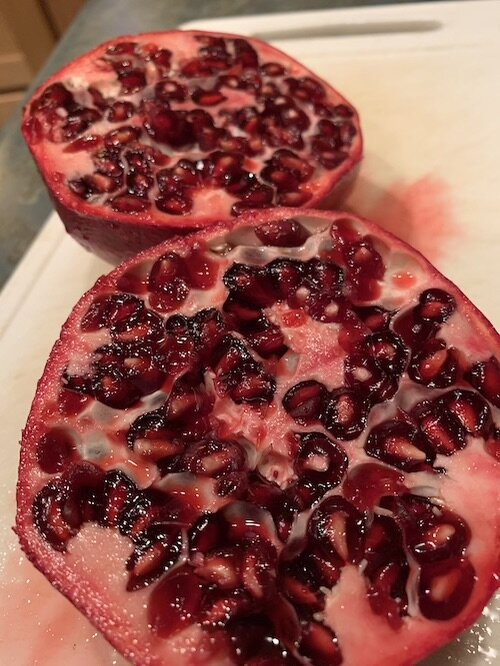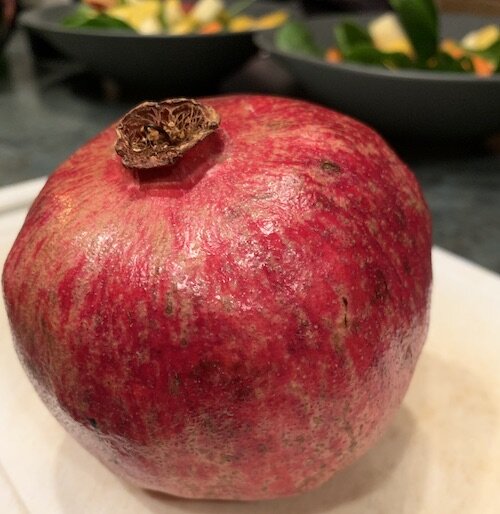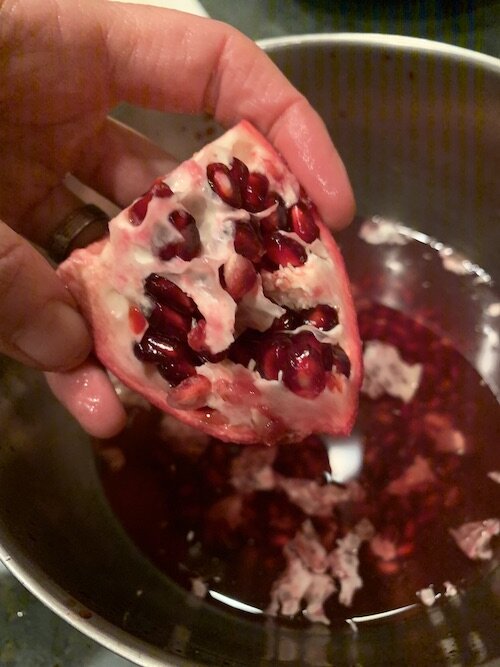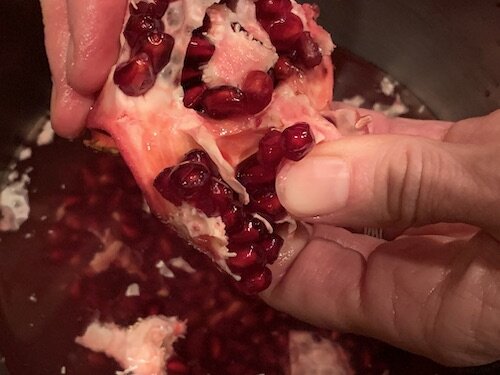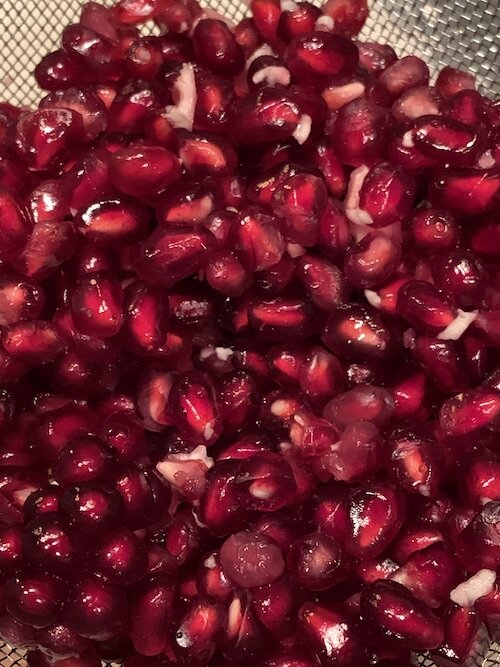One of the most eye-catching fruits this time of the year is the pomegranate.
If you’ve never purchased a whole pomegranate before, it can be a little intimidating after realizing you have to give a little effort to extract the edible parts. Some folks like to go the easier route and buy the already harvested arils (the edible ‘seeds’ inside the fruit), which you can typically find in the produce section at your local food market or in the frozen fruit section.
It took me a while to get over the semi-laziness of buying a whole pomegranate and going to the “trouble” of harvesting the yummy gems. But seriously, it is NOT that big of a deal. And in my opinion, it is fun… albeit sometimes a tad messy.
There are a few ways to work the pom. My preferred method is to first halve the fruit (with a sharp knife, of course) and then cut into smaller quarters or eighths.
Place all of the pom pieces in a bowl and cover with cold water. Then use your hands to work apart the fruit and extract the peel and pith from the arils. The arils typically sink to the bottom of the bowl, whereas the pithy inedible portions float to the top. Gather all of the peel to discard or compost. Scoop the arils into a colander so they can dry out a bit. This is easily doable in 5 minutes.
Nutritionally, the arils (with their juice) pack a decent amount of fiber, vitamin C, folate, and antioxidants (such as flavonoids, ellagitannins, and anthocyanins).
How to incorporate them, you wonder? You can nibble as is, although they are an incredible addition to salads, salsas or relishes, yogurts, oatmeal or “noatmeal” grain-free concoctions, fruit salads, and on top of goat cheese. Hey, you can even sprinkle your cocktail / mocktail with a few of these colorful beauties. The crowd be all jelly of you.
It’s not too late to build them into your Thanksgiving dinner… yes? I’d be delighted if you share with me your pomegranate food photo and tag me on Instagram.
Thankful for you,
Dina



